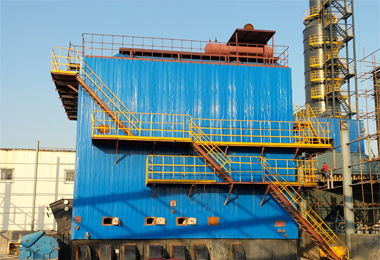
Nov . 29, 2024 16:22 Back to list
Optimizing Boiler Settings for Efficient Hot Water Production and Energy Savings
Boiler Settings for Hot Water A Comprehensive Guide
Boilers are essential components of modern heating systems, providing the hot water necessary for various domestic and commercial applications. Understanding the correct settings for these boilers is crucial for ensuring efficient operation, enhancing safety, and optimizing energy consumption. This article aims to delve into the key aspects related to boiler settings for hot water.
Understanding Boiler Basics
Before diving into specific settings, it’s important to grasp what a boiler is and how it functions. A boiler is a closed vessel where water is heated to produce steam or hot water, which is then circulated for heating spaces or providing hot water for domestic use. Boilers come in different types, with the most common being conventional, combi, and system boilers. Each has unique settings and operational techniques.
Key Settings to Consider
1. Temperature Setting - One of the most critical settings for a boiler is the water temperature. The standard hot water temperature setting is typically around 60°C (140°F). At this temperature, the water is hot enough for most household tasks, including washing dishes and bathing, while also preventing the growth of harmful bacteria like Legionella. However, higher temperatures may be necessary for specific applications, such as heating systems in colder climates.
2. Pressure Setting - Boiler pressure impacts performance and efficiency. A typical domestic boiler operates at a pressure of 1 to 1.5 bar. If the pressure drops below this range, the boiler may fail to operate correctly. Conversely, exceeding the upper limit can lead to a hazardous situation. Regular maintenance checks are essential to monitor and adjust these pressure levels accordingly.
3. Thermostat Control - A thermostat regulates water temperature within the boiler. Setting it to the correct temperature ensures that the water heats efficiently without excessive energy use. Programmable thermostats can provide additional benefits, allowing users to set schedules for heating times, optimizing energy consumption and reducing costs.
4. Flow Rate - Flow rate is another significant factor determining hot water availability. It is measured in liters per minute (L/min) and directly influences the performance of the hot water system, especially in larger households. A higher flow rate means hot water can be delivered to multiple outlets simultaneously without significant drops in temperature.
boiler settings for hot water

5. Ventilation Settings - Proper ventilation is crucial for gas or oil-fired boilers to function safely and efficiently. Ensure that air intake and flue systems are clear of obstructions. Regular inspections can prevent issues such as backdrafting and carbon monoxide build-up.
Safety Considerations
Safety should always be a priority when configuring boiler settings. Regular maintenance by a certified technician is fundamental in minimizing safety risks associated with boiler operation. This includes checking for leaks, ensuring the pressure relief valve functions properly, and verifying that all safety controls are operational.
Moreover, it is essential to educate all users about the boiler's operational procedures and emergency shutdown procedures. Each household or facility should have a carbon monoxide detector installed, especially when using gas boilers, and users should be familiar with the signs of carbon monoxide poisoning.
Energy Efficiency
In addition to ensuring safety and comfort, having correctly configured boiler settings can lead to energy savings. By optimizing temperature settings, reducing flow rates when not needed, and scheduling heating times according to usage patterns, users can significantly decrease their energy consumption. The installation of modern smart thermostats can further enhance these efficiencies by learning user behaviors over time.
Conclusion
In conclusion, understanding and adjusting boiler settings for hot water is crucial for efficient, safe, and economical operation. Regular maintenance, proper temperature and pressure settings, and awareness of energy efficiency are all essential components of managing a boiler system. By taking the time to optimize these settings, users can enjoy consistent hot water while minimizing environmental impact and reducing energy costs. Always consult with professionals for installation and maintenance to ensure compliance with local regulations and standards.
-
High-Efficiency Commercial Oil Fired Steam Boiler for Industry
NewsJul.30,2025
-
High-Efficiency Biomass Fired Thermal Oil Boiler Solutions
NewsJul.30,2025
-
High Efficiency Gas Fired Thermal Oil Boiler for Industrial Heating
NewsJul.29,2025
-
High-Efficiency Gas Fired Hot Water Boiler for Sale – Reliable & Affordable
NewsJul.29,2025
-
High Efficiency Biomass Fired Hot Water Boiler for Industrial and Commercial Use
NewsJul.29,2025
-
High-Efficiency Biomass Fired Hot Water Boiler for Industrial Use
NewsJul.28,2025
Related PRODUCTS






















